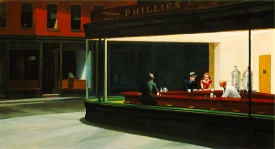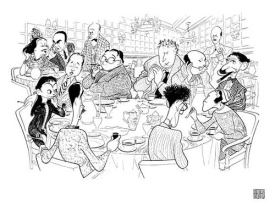
The first music for the first day of the new year presents an interesting choice. Does it set the tone for the next 365? Traditionally we might select an optimistic piece that speaks to us of new beginnings. But especially this year, as we enter the new year, we can’t leave the old one behind. There’s a feeling of melancholy filled with possibility, the old year hangs in the air like an unresolved chord.
I turned to Yo-Yo Ma first. He’s an artist who’s been coming up in conversation recently. Born in Paris, raised in New York, he performed at the White House for John Kennedy at the age of seven. A superlative and joyful musician, it’s his work with the Silk Road Project that seems so important at this moment in time.
The Silk Road was an extensive interconnected network of trade routes, not only a conduit for silk, but for many other products and was also a very important path for cultural and technological transmission by linking traders, merchants, pilgrims, monks, missionaries, soldiers, nomads and urban dwellers from China to the Mediterranean Sea for thousands of years.
Yo-Yo Ma’s idea of a modern Silk Road where many cultures meet and cross-fertilize is a positive vision for a new networked world. I chose a piece from his Dvorak Album called Silent Woods.
I then turned to Jeri Southern, because the very thought of her makes me smile. There’s something of the indestructible American spirit in her voice. The photo at the top of the post is Jeri in her backyard with her daughter and dog.
And finally Tom Waits brings it home with his song You Can Never Hold Back Spring. A reminder that seasons change, and there’s a point at which the shortest day of the year is over and the light begins to return.
At the dawn of a new year, that unresolved chord can be seen in a new light. At one time we would have waited patiently in the audience for the musicians to finish the song. But now we look up and see they’ve left the stage, the chord still ringing. Yo-Yo Ma points the way with his new collaborative piece Dona Nobis Pacem. It’s up to us to take up the song and bring it to its proper conclusion.
You Can Never Hold Back Spring
Tom Waits
You can never hold back spring
You can be sure that I will never
Stop believing
The blushing rose will climb
Spring ahead or fall behind
Winter dreams the same dream
Every time
You can never hold back spring
Even though you’ve lost your way
The world keeps dreaming of spring
So close your eyes
Open your heart
To one who’s dreaming of you
You can never hold back spring
Remember everything that spring
Can bring
Baby you can never hold back spring




